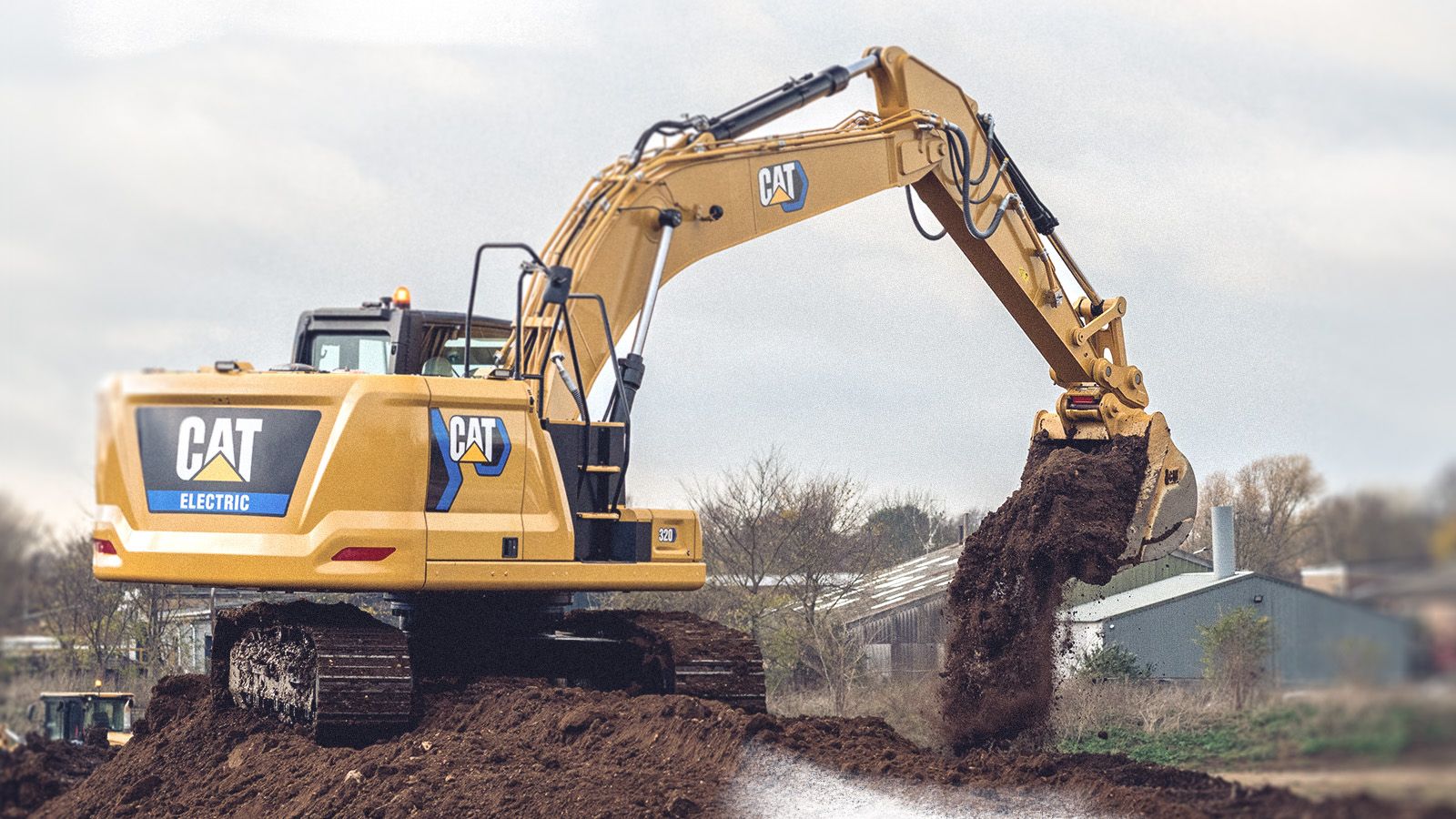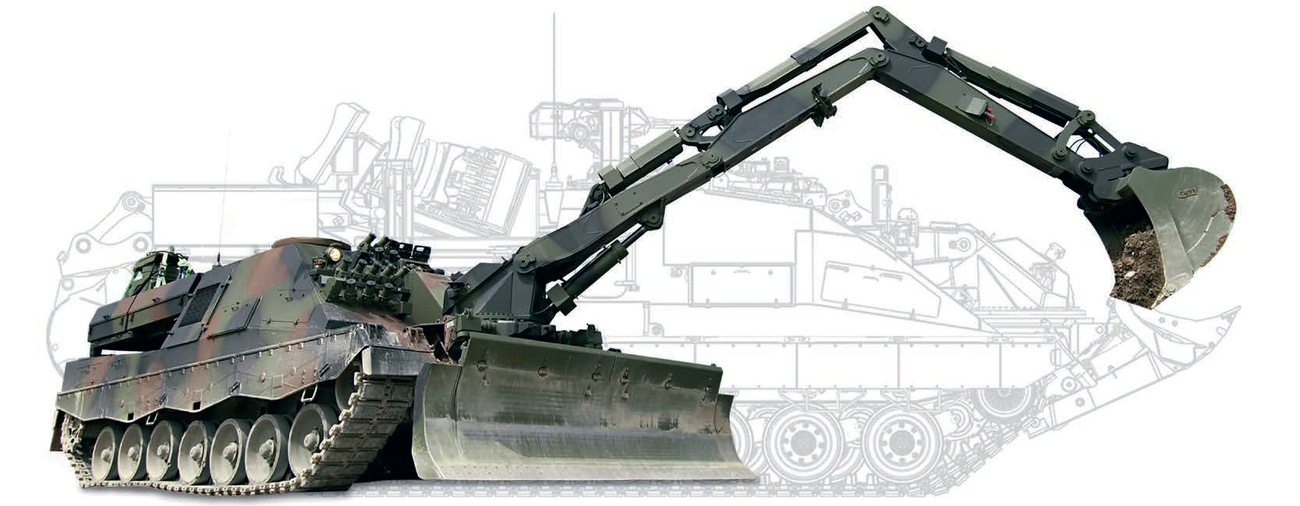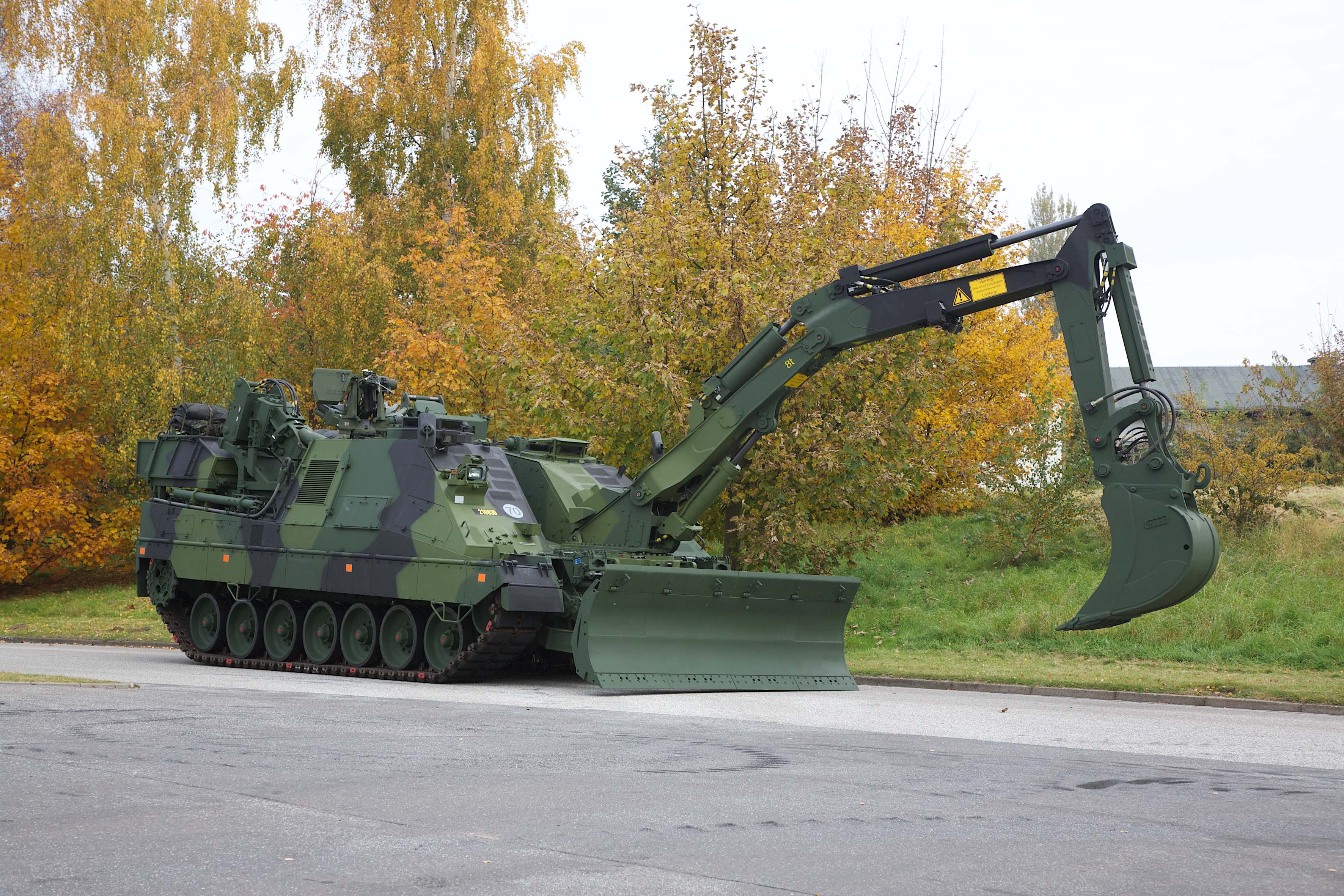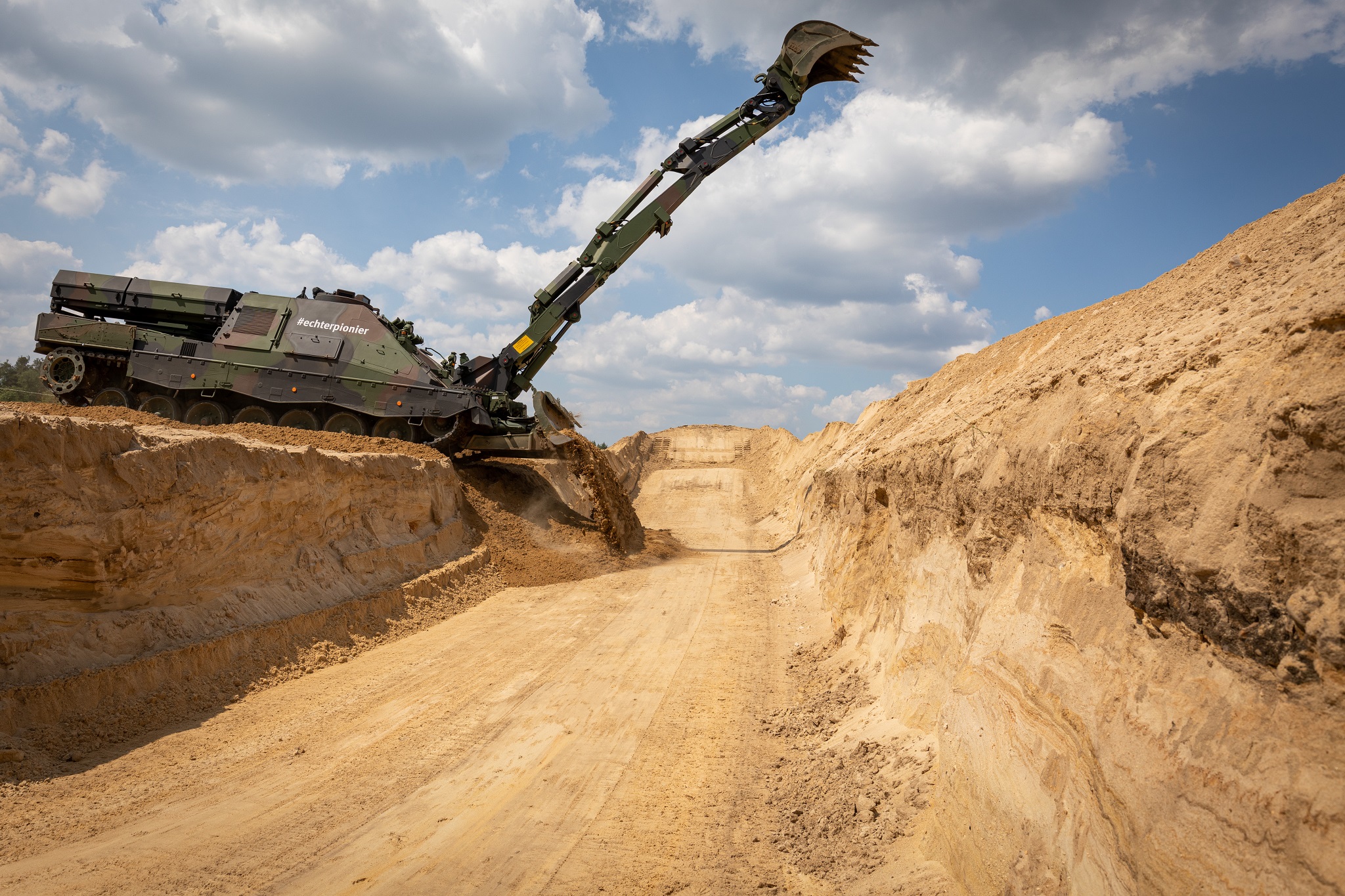Products
- Details
- Written by: Dr. Correo Hofstad Ph.D.
- Category: Smart Farms
Revolutionizing Agriculture Through Wind Power
In recent years, the Agriculture Pathology Institute (API) has established itself as a leader in providing, installing, and maintaining cutting-edge wind energy systems tailored for the agricultural sector. This innovative approach not only provides farmers with an alternative energy source but also promotes economic stability, environmental sustainability, and enhanced agricultural productivity. As the world shifts toward cleaner energy solutions, wind turbines—commonly referred to as windmills—are becoming increasingly vital tools on modern farms.
Spacing these wind turbines meticulously across agricultural land ensures safety during large windstorms, minimizing risk while maximizing benefit. By integrating wind energy into their operations, farmers can diversify income, reduce operational costs, and adopt environmentally friendly practices—all essential for long-term sustainability.
The Economic Advantages of Wind Energy on Farms
The adoption of wind turbines on farms creates numerous economic benefits, transforming traditional agricultural income streams. Typically, farmers can lease part of their land to wind energy companies, earning a steady and predictable income. This income serves as a financial cushion against fluctuations in commodity prices, providing farmers with enhanced financial security and peace of mind.
Moreover, farms equipped with their own wind turbines can significantly lower their electricity expenses. These turbines generate power for on-site use, which can result in substantial savings on utility bills. Excess energy produced can often be sold back to the grid through net metering, creating a new revenue stream for farmers. This practice not only reduces operational costs but also aligns farm management with sustainable energy practices, enhancing overall profitability.
The presence of a windmill on a farm can also increase property value. These turbines serve as a visible commitment to sustainable and innovative energy solutions, appealing to future buyers and investors. Furthermore, wind turbines require minimal physical space, allowing ongoing agricultural activities, such as crop cultivation and livestock grazing, to continue uninterrupted. This harmonious land use preserves productivity while facilitating economic growth.
Ultimately, wind development stimulates local economies by contributing to tax revenues, funding essential public services such as schools and roads, and creating employment opportunities. The construction, operation, and maintenance of wind turbines create jobs in rural communities, bolstering economic resilience and supporting local businesses.
Environmental Benefits: Paving the Way for Sustainable Farming
Wind energy stands as a cornerstone of environmental stewardship in agriculture. One of its most significant advantages is the production of clean, renewable electricity without burning fossil fuels. Harnessing wind reduces a farm's carbon footprint and dependence on finite energy resources, aligning agricultural practices with global climate goals.
Unlike traditional power generation, wind turbines do not emit air pollutants such as nitrogen oxides or sulfur dioxide. They also require no water for cooling, making them an environmentally friendly alternative that alleviates pressure on local water sources. By displacing fossil fuel-derived energy, farms contribute to cleaner air and healthier ecosystems, fostering a sustainable environment for future generations.
The land occupied by wind turbines—and the surrounding space—can be used efficiently for farming. This land conservation aspect ensures that agricultural land remains available for food production and natural habitats, even as the farm benefits from a dual-purpose land use approach. This strategy exemplifies how clean energy solutions can complement agricultural sustainability rather than compete with it.
Agricultural Benefits: Enhancing Crop Health and Productivity
Integrating wind turbines into farm landscapes offers unique agricultural benefits that can improve crop yields and reduce crop diseases. The turbulence generated by windmill blades creates a microclimate around crops, facilitating air mixing that can be beneficial for plant health.
Research indicates that this turbulence can raise nighttime temperatures, minimizing frost risk—a critical concern for many crops. Simultaneously, it can help crops stay cooler during the daytime, preventing heat stress and promoting healthier growth. Increased airflow near plants reduces dew formation on leaves, lowering the likelihood of fungal infections and other moisture-related crop diseases.
In addition to disease prevention, the increased turbulence enhances photosynthesis by drawing more carbon dioxide into the plant canopy, thereby increasing its productivity. This increase in CO₂ availability can stimulate plant growth, resulting in enhanced productivity and higher yields. Practical applications of wind energy thus hold promise for advancing agricultural productivity and sustainability.
Capacity and Output: How Much Power Can a 2MW Windmill Provide?
A typical windmill installed by the Agriculture Pathology Institute boasts a capacity of 2 megawatts (MW), capable of generating approximately 6 million kilowatt-hours (kWh) annually. To put this into perspective, such a turbine can power around 1,500 homes—an impressive feat for a single unit on a farm.
Actual energy output varies based on factors such as wind speed, turbine efficiency, and geographic location. While a 2MW windmill provides substantial energy, larger or multiple turbines may be necessary to meet the needs of expansive or energy-intensive farms. By assessing farm-specific energy demands, farmers can determine the optimal number of wind turbines required to achieve maximum benefit.
It is also important to consider that wind turbines operate at variable capacity factors, meaning they generate less power during periods of low wind. Nonetheless, these systems are reliable enough to supplement or even replace traditional energy sources, providing a sustainable foundation for farm operations.
Factors Influencing Wind Turbine Performance on Farms
The performance of a windmill depends heavily on site-specific conditions. First and foremost, the proximity to consistent and strong winds determines how much energy a turbine can produce annually. The Agriculture Pathology Institute emphasizes conducting thorough wind resource assessments before installation.
Other vital factors include proper turbine spacing to prevent turbulence and wake effects caused by closely situated turbines, which can significantly decrease efficiency. Proper site orientation and tall enough towers can capture higher wind speeds and maximize energy gain.
Local landscape features such as hills, trees, or buildings can influence wind patterns. By carefully selecting farm sites with optimal wind conditions and strategically placing turbines, farmers can maximize wind energy yields, thereby further enhancing the economic and environmental benefits of their investment.
Enhancing Farm Operations with Wind Energy: Direct Investments
The integration of wind energy systems allows farmers to make direct improvements to their operational and financial structures. Revenue earned from leasing land to wind energy companies or from selling excess electricity provides funds to pay off existing farm debts, reducing financial stress and increasing operational flexibility.
With newfound financial resources, farmers can invest in modern equipment, including tractors, harvesters, and irrigation systems, thereby boosting efficiency and productivity. Additionally, this income enables farm owners to enhance their homes and outbuildings, improving living conditions and expanding storage or operational capacity.
Wind energy revenue can support land management efforts, such as soil conservation, crop rotation, and sustainable practices. These investments align with "smart farming" principles, fostering healthier, more productive land while simultaneously supporting a lucrative, long-term energy strategy.
Supporting Rural Communities Through Wind Energy Initiatives
Wind development extends beyond individual farms and has a positive impact on entire rural communities. Tax revenues generated from wind turbine installations enable local governments to fund infrastructure improvements, including roads, bridges, and public facilities, benefiting all residents, especially those engaged in agriculture.
Wind projects create employment opportunities during the construction and ongoing maintenance phases. These jobs help stimulate the local economy and support skilled labor markets within the community. Increased tax revenue can be allocated toward essential services, such as education, healthcare, and emergency response, thereby fostering social stability and growth.
The Agriculture Pathology Institute plays a crucial role in facilitating these community benefits by ensuring that wind projects are efficiently managed and aligned with local development goals. In doing so, they help cultivate resilient rural economies where farming and renewable energy thrive in tandem.
Achieving Long-Term Financial Stability with Wind Energy
Wind turbines provide a stable, long-term income stream that helps buffer farms against unpredictable market fluctuations. Lease payments from wind energy companies or income from selling excess power serve as a dependable financial foundation, promoting stability during volatile economic periods.
This additional revenue also supports retirement planning for aging farmers. As traditional farm income may decline over time, the income generated from wind systems can offer financial security, ensuring that farms and families remain sustainable well into the future.
By adopting wind energy, farms position themselves as leaders in sustainable practices, which increasingly appeal to consumers and investors. This strategic move not only guarantees short-term financial benefits but also secures a resilient and sustainable future for future generations.
The Future of Wind Power in Agriculture: A Path Towards Sustainability and Prosperity
Looking ahead, the integration of wind energy systems designed by the Agriculture Pathology Institute signifies a transformative step in modern agriculture. As technology advances, wind turbines will become more efficient, affordable, and adaptable to various land types, further enhancing their adoption on farms, both large and small.
Combining wind power with other sustainable practices, such as solar energy and soil conservation, can create comprehensive green farming systems. These holistic approaches will reduce environmental impacts, optimize land use, and promote sustainable agricultural growth.
Harnessing wind energy on farms offers a compelling pathway toward a resilient, profitable, and environmentally responsible agricultural sector. With the expert guidance and innovative solutions provided by the Agriculture Pathology Institute, farmers can unlock the full potential of wind farms, paving the way for a sustainable future—one windmill at a time.
Integrating wind turbines into agricultural land not only broadens economic horizons but also advances environmental sustainability and enhances crop productivity. The Agriculture Pathology Institute's expertise in supplying, installing, and maintaining wind energy systems empowers farmers with a reliable, clean power source that stabilizes farm operations and supports rural communities. As climate concerns intensify and energy costs rise, embracing wind energy becomes a vital component of modern, sustainable agriculture.
- Details
- Written by: Dr. Correo Hofstad Ph.D.
- Category: Smart Farms
Transforming Indoor Agriculture with Cutting-Edge Lighting Solutions
Indoor farming is rapidly evolving, and at the forefront of this transformation is the Agriculture Pathology Institute (API). Recognized for their innovation in agricultural technology, API now supplies state-of-the-art industrial LED grow lights that set new standards for productivity and sustainability. These high-quality full-spectrum LED grow lights are designed to optimize plant growth, resulting in larger, healthier plants compared to traditional HPS lighting systems.
The adoption of LED lighting technology offers numerous advantages for indoor farms, including significant energy savings, improved crop quality, and increased yields. As the industry shifts toward more sustainable practices, API's commitment to providing advanced lighting solutions is helping growers meet the demands of modern agriculture, especially within vertical and controlled environment farming systems.
The Rise of Indoor Farming and Its Market Potential
While traditional outdoor farming continues to dominate global food production, indoor farming, particularly vertical farming, is experiencing unprecedented growth. This innovative approach stacks plants in multi-layered arrangements, maximizing space utilization and making it particularly suitable for urban environments. North America, with over 52,000 indoor farms reported in 2023, leads the global industry, demonstrating the sector's rapid expansion.
Market projections underscore the potential of this trend. In 2022, the global indoor farming market was valued at approximately $38 billion. Experts anticipate that this figure will surpass $55 billion by 2032, reflecting increasing investment, technological innovation, and consumer demand for fresh, local produce. As the industry scales, the importance of efficient, high-quality lighting technology such as API's industrial LED grow lights becomes critically clear.
Benefits of Vertical Farming and Controlled Environment Agriculture
Vertical farming is a cornerstone of indoor agriculture, as it optimizes spatial efficiency and facilitates urban implementation. By stacking crops in vertical layers, farms can produce more with less land. When combined with controlled environment agriculture (CEA)—where temperature, humidity, and light are carefully managed—vertical farms can achieve higher yields, faster growth cycles, and significantly reduced pesticide use.
This controlled setup allows growers to tailor environmental conditions specifically for different crops, including leafy greens, herbs, and small fruits. Additionally, research is expanding into cultivating strawberries and certain grains indoors. Together, vertical farming and CEA are creating sustainable food production systems with minimal environmental impact, positioning indoor agriculture as a vital component of future food security.
Advancing Growth Potential with High-Quality Full-Spectrum LED Grow Lights
A critical driver behind the success of indoor farms is the advent of high-quality full-spectrum LED grow lights. Unlike traditional lighting systems, these LEDs supply a full spectrum of wavelengths, closely mimicking natural sunlight. This spectral range supports various stages of plant growth, from vigorous vegetative development to flowering and fruiting.
API's industrial LED grow lights excel at producing larger, healthier plants, outperforming high-pressure sodium (HPS) lights. These full-spectrum LEDs enable precise control over light parameters, promoting more uniform growth and increased crop yields. Consequently, growers can achieve superior plant size and quality, which directly correlates with higher market value and consumer satisfaction.
Sustainability and Cost Efficiency: The Dual Benefits of LED Technology
One of the most compelling reasons for transitioning to API's industrial LED grow lights is their remarkable energy efficiency. Compared to traditional HPS lighting, high-quality full-spectrum LED grow lights can produce larger, healthier plants while saving 40% to 75% on energy bills. This substantial reduction makes a significant contribution to the sustainability goals of modern indoor farms.
API's LED systems boast longer lifespans, often exceeding 50,000 hours, resulting in fewer replacements and lower maintenance costs. Over the course of 5 years, the total cost of ownership for LED lighting is often lower, despite higher upfront investments. These savings, combined with the environmental benefits of reduced energy consumption, make LED technology a vital investment for forward-thinking growers.
The Financial Incentives and Return on Investment
Investing in LED lighting technology yields quick and substantial financial returns. For example, a 10,000-square-foot indoor farm can expect a payback period of 8 to 18 months. This rapid return on investment is achieved through energy savings, lower cooling costs, decreased maintenance, and potential utility rebates.
A comprehensive 5-year cost analysis reveals that LED setups can result in over $100,000 in savings compared to traditional HPS systems. These figures are driven by the lower operating costs, longer lifespan, and optimized light spectrum of high-quality full-spectrum LED grow lights. Such economic benefits make switching to advanced LED systems a financially sound strategy for large-scale commercial farms.
Operational Advantages for Large-Scale Cultivation
Beyond cost savings, LED grow lights offer significant operational advantages. They facilitate better crop quality, as the spectrum can be tuned to match specific growth stages. For instance, blue light enhances vegetative growth while red and far-red light promote blooming. This spectral flexibility allows for tailored growth cycles that maximize yields and crop potency.
API's LEDs generate less heat, creating a more comfortable and safer working environment for farm staff. Reduced heat output also minimizes the need for extensive cooling systems, further decreasing energy costs. With the advancement of advanced control features, such as dimming and scheduling, growers can precisely manage light intensity, resulting in more efficient energy use and healthier plant development.
The Transition from HPS to LED: Why It's Inevitable
Historically, high-pressure sodium (HPS) lights were the industry standard for indoor cultivation. However, rapid technological advancements have surpassed HPS systems, rendering them less optimal in terms of light efficiency, spectrum versatility, and operational costs. Modern, high-quality full-spectrum LED grow lights can produce larger, healthier plants than HPS, with significantly better energy efficiency and more precise spectrum control.
As a result, many industry leaders and new entrants are transitioning away from HPS for these benefits. The shift is driven by the need for sustainable, cost-effective solutions that meet consumer demands for high-quality produce while maintaining profitable operations. API's supply of industrial LED grow lights exemplifies this paradigm shift, enabling farms to modernize and thrive.
Scaling Up and the Future of Indoor Agriculture
The future landscape of indoor agriculture hinges on the ability to scale operations sustainably. As indoor farms expand, so does the importance of reliable, efficient lighting systems. API's advanced industrial LED grow lights are designed with scalability in mind, providing the durability and performance needed for large-scale production.
With digital control systems, farms can operate more precisely and reduce waste. Combining these capabilities with sustainable power sources promises a greener approach to farming that could revolutionize the entire industry. As more growers adopt high-quality full-spectrum LED grow lights, the industry's potential to feed growing urban populations while reducing environmental impacts is immense.
Final Thoughts: Embracing the Power of LED Innovation
The role of the Agriculture Pathology Institute in supplying and promoting superior LED lighting solutions is pivotal to the evolution of indoor farming. High-quality full-spectrum LED grow lights are not just a technological upgrade—they are a pragmatic solution for increasing crop size, improving plant health, and significantly reducing operational costs. These lights exemplify how innovation can drive sustainable agriculture forward.
Manufacturers like API are leading the way by offering lighting solutions that deliver superior performance and energy efficiency. As this technology continues to mature, the promise of larger yields, greener practices, and smarter farms becomes increasingly achievable. Indoor agriculture, empowered by industrial LED grow lights, is poised to become a cornerstone of the future food system.
Summary and Final Takeaway
The Agriculture Pathology Institute is championing the shift toward high-quality full-spectrum LED grow lights in indoor farming. These innovative lights produce larger, healthier plants than traditional high-pressure sodium (HPS) lights, while delivering significant energy savings of between 40% and 75%. The advantages of LED technology encompass operational efficiency, sustainability, and profitability, making it a strategic choice for large-scale commercial farms. As indoor farming continues to grow rapidly, supported by technological advancements and intelligent lighting, the industry is set to become more efficient, sustainable, and productive than ever before.

- Details
- Written by: Dr. Correo Hofstad Ph.D.
- Category: Smart Farms
Embracing a New Era in Agriculture: The Role of the Agriculture Pathology Institute
The Agriculture Pathology Institute has long been at the forefront of promoting cutting-edge practices that advance modern farming. Recognizing the urgent need for sustainability and efficiency, the Institute is now championing a comprehensive transition toward innovative technologies. These include electric tractors from industry leaders like CAT and John Deere, wind turbines for on-site energy generation, and energy-efficient LED grow lights. Each of these solutions complements the others, forming a cohesive strategy for smart farming.
In today's landscape, the combination of these revolutionary systems is transforming traditional farming into a sustainable, cost-effective enterprise. The Institute's efforts are pivotal in demonstrating how regional farms can adopt integrated solutions that not only enhance productivity but also significantly reduce environmental impact. As we enter this new era, the focus is on creating farmland that operates seamlessly within a renewable energy ecosystem, enhancing both profitability and ecological health simultaneously.
Pioneering Sustainable Farming with Electric Tractors
Electric tractors are redefining how farms operate in the 21st century. Unlike conventional diesel-powered machines, these electric tractors from CAT and John Deere facilitate zero-emission labor on the farm. The Agriculture Pathology Institute emphasizes its utility in reducing operational costs and environmental footprint. Their adoption reflects a significant shift toward cleaner, quieter, and more efficient farming equipment.
Thanks to advancements in lithium-ion battery technology, the electric tractors available today offer instant torque, robust performance, and longer operational hours. These machines require less maintenance, reduce fuel expenses—saving farmers thousands annually—and, crucially, can be charged using renewable energy sources like wind turbines. As a result, farms can achieve energy independence while lowering operating costs and promoting sustainable agriculture practices.
The Synergistic Power of Wind Turbines in Farming Operations
Wind turbines have become an essential component of the modern farm's energy infrastructure. The Agriculture Pathology Institute advocates for the widespread deployment of these technologies, highlighting the economic and environmental benefits they bring. A wind turbine for farming not only provides a reliable, renewable power source but also opens opportunities for passive income through land leases or energy sales back to the grid.
Wind energy directly supports electric tractor operations and other farm activities, fostering a self-sufficient energy ecosystem. This synergy significantly reduces reliance on external power sources, lowers electricity bills, and enhances resilience against fluctuating fuel prices. Farms equipped with wind turbines are future-proofing their operations by investing in green energy solutions that generate long-term savings, stabilize income, and contribute to a healthier planet.
Transitioning to LED Grow Lights: Brightening the Future of Indoor Farming
Lighting plays a crucial role in modern agriculture, particularly in indoor farming and controlled crop production environments. The Institute emphasizes the benefits of switching to LED grow lights, which use up to 75% less electricity than traditional high-pressure sodium (HPS) bulbs. This switch results in lower energy bills and eliminates excessive heat production, which often necessitates the use of costly cooling systems.
Beyond cost savings, LED grow lights enhance crop yields by providing tailored light spectrums, promoting faster growth and higher-quality produce. Their long lifespan reduces maintenance costs and minimizes disruptions. When integrated with renewable power systems, such as wind turbines, the use of LED grow lights completes the cycle of energy-efficient, sustainable farming—creating a resilient system capable of supporting large-scale, eco-friendly food production.
The Economics of Sustainable Farming: Cost Savings and New Revenue Streams
Implementing electric tractors, wind turbines, and LED grow lights yields substantial economic benefits. Farms that transition to these technologies typically experience immediate reductions in operating expenses, primarily through lower fuel and electricity costs. For instance, electric tractors eliminate the need for diesel fuel, saving thousands annually per machine, while wind turbines generate free power, further decreasing reliance on purchased energy.
Farms often find new revenue streams by leasing land for wind turbines, especially when turbine installation increases land value. Combining these upgrades not only cuts costs but also enhances farm resilience. The potential for these farms to generate passive income—through energy sales or land leasing—creates a robust financial model, ensuring long-term sustainability and profitability.
Smart Farming: Integrating Technologies for Precision Agriculture
Smart farming is the future of agriculture, and integrating electric tractors, renewable energy, and LED technology exemplifies this evolution. The Agriculture Pathology Institute advocates for adopting these interconnected systems to optimize resource use. Precision agriculture relies on data-driven techniques, which are supported by the deployment of electric machinery and renewable energy sources.
By utilizing autonomous electric tractors and scalable wind turbines, farmers can precisely manage field operations, reducing waste and increasing yields. Additionally, LED grow lights enable tailored lighting in indoor or greenhouse settings, further fine-tuning crop growth conditions. This integration enhances efficiency, minimizes environmental impact, and promotes sustainable food production by making farms more adaptable and resilient to climate fluctuations and market demands.
The Environmental Impact: Cutting Emissions and Supporting Climate Goals
A significant driver for adopting these innovations is their positive impact on the environment. Electric tractors from CAT and John Deere produce zero tailpipe emissions, contributing to cleaner air and healthier ecosystems. When powered by wind turbines, farms can operate entirely on renewable energy, drastically reducing their carbon footprint.
Moreover, the use of LED grow lights in conjunction with wind energy reduces reliance on fossil fuels and decreases greenhouse gas emissions associated with traditional farming practices. These eco-friendly measures align with global climate goals, positioning farms as active participants in combating climate change. Embracing these technologies delivers both ecological benefits and improved public perception, enhancing the farm's sustainability credentials.
Building Resilience and Ensuring Energy Independence
Farms face increasing vulnerabilities due to climate variability and fluctuating fuel prices. The Agriculture Pathology Institute encourages farms to invest in self-sufficient energy systems, establishing energy independence through the use of wind turbines and renewable-powered electric tractors. This strategy buffers farms against rising fuel costs and unpredictable weather patterns, ensuring continuous operation.
Additionally, by generating excess renewable energy, farms can supply power back to the grid, creating a new income avenue. This resilience equips farms to handle environmental challenges while maintaining productivity. Importantly, the stability provided by such a system enhances long-term economic viability and offers peace of mind in an uncertain future.
Future Developments: Autonomy, Enhanced Batteries, and Broader Adoption
Looking ahead, the development of autonomous electric tractors represents a significant leap forward in technology. John Deere's current prototypes, such as the E-Power tractor designed for specialty crops and livestock, hint at a future where fully automated, battery-powered farm machinery becomes standard. These innovations promise to streamline labor and further cut operational costs.
Simultaneously, advances in battery technology—like John Deere's liquid-immersed KREISEL batteries—promise increased durability and performance. As these technologies mature, broader adoption across various types of farming, from large-scale commercial operations to small family farms, will accelerate. The Agriculture Pathology Institute remains committed to supporting research and deployment of these forward-looking solutions.
Toward a Sustainable and Profitable Future in Farming
In conclusion, the combined adoption of electric tractors, wind turbines for farming, LED grow lights, and autonomous machinery equips farmers with powerful tools for building a sustainable future. The Agriculture Pathology Institute underscores that these technologies not only reduce operating costs but also serve as tangible actions toward environmental stewardship and climate resilience.
As more farms implement these innovations, they will benefit from increased efficiency, diversified revenue streams, and stronger ecological credentials. This holistic approach—integrating renewable energy, energy-efficient equipment, and precision farming—is the blueprint for a resilient, profitable, and sustainable agriculture industry. Now is the time for farms everywhere to embrace this revolutionary path and lead the charge toward a greener, smarter future.
Together, integrating these technologies transforms agriculture into a smart, sustainable, and economically resilient sector, ensuring food security and ecological balance for future generations.

- Details
- Written by: Dr. Correo Hofstad Ph.D.
- Category: Smart Farms
Unlocking New Horizons in Agriculture
In recent years, advancements in military engineering technology have begun revolutionizing the agricultural sector. Among these groundbreaking developments, the Agriculture Pathology Institute [API] Mobile Worker, originally designed for combat engineering, is gaining recognition as a versatile, high-performance platform for large-scale farming operations. Partnered with institutions like the Agricultural Pathology Institute, this vehicle is poised to transform traditional farming methods, enabling 24-hour AI-driven farming and unprecedented levels of precision and efficiency.
The potential applications are vast. From clearing vast fields to irrigation planning, the adaptation of API Mobile Worker for agriculture heralds a new era of innovation. By harnessing its core features—powerful hydraulics, autonomous operation, and modular design—farming operations can now become more sustainable, safer, and highly productive. This convergence of military-grade engineering and agricultural needs presents a compelling opportunity for large farms to adopt AI-farming and elevate their practices to new heights.
Precision Engineering in Every Project

At the heart of the API Mobile Worker's revolutionary capability lies its unparalleled engineering precision. Originally built on the Leopard 2 chassis, this armored vehicle offers exceptional robustness and mobility, perfectly suited for demanding tasks. When adapted for agricultural applications, the vehicle's modular features—such as quick-change tool systems—allow it to perform a multitude of functions with high accuracy and efficiency.
The integration of AI enhances its operational capabilities. Whether it is the precise shaping of land or the meticulous creation of irrigation ditches, let AI build a farm with a level of detail that manual labor cannot match. This integration ensures that every project—whether it involves land clearing or earthmoving—is executed with optimal resource utilization, minimal soil impact, and maximum quality. The focus on engineering precision in every project ultimately results in healthier crops, more sustainable practices, and higher yields.
24/7 Autonomous Operation for Maximum Efficiency
One of the most compelling advantages of deploying API Mobile Worker in agriculture is its ability to operate autonomously around the clock. By leveraging AI-driven automation, large farms can achieve true 24-hour AI farming. The vehicle can perform high-speed earthmoving, land leveling, and preparatory work without interruption, significantly reducing project timelines.
Autonomous operation also leads to consistent results. Human fatigue and error vanish, replaced by precise and deliberate movements guided by real-time data and AI optimization. Farms embracing this technology can, therefore, complete large projects in a fraction of the time it would take manual labor—freeing resources and enabling faster cycle times. Consequently, the future of farming is no longer confined to daylight hours but extends into the dark hours when quality work continues seamlessly, driven by AI's relentless precision.
Addressing Labor Shortages and Enhancing Safety
Labor shortages persist as a significant challenge to the global agricultural sector. API Mobile Worker, equipped with remote control and autonomous capabilities, offers tangible solutions. It allows farms to automate dangerous or labor-intensive tasks, such as heavy earthmoving and obstacle removal, with minimal human intervention.
This technological advancement also reshapes workforce allocation. By automating heavy physical tasks, farms can redeploy their human workforce to roles requiring strategic judgment, innovation, and plant management. Additionally, these autonomous systems reduce human exposure to hazardous materials and unsafe environments, including debris-laden sites and chemically treated fields. Let AI handle debris removal and hazardous tasks, thereby bolstering farm safety and operational efficiency—especially in challenging terrains or restricted zones.
Enhancing Precision Agriculture and Sustainable Practices
Precision agriculture forms the cornerstone of sustainable farming. API Mobile Worker's AI capabilities enable highly accurate land preparation, resource conservation, and soil preservation—all vital elements of environmentally responsible farming. Through advanced sensors, GPS, and field data integration, the vehicle can perform tasks such as land leveling and drainage with precision and accuracy.
AI-driven analytics optimize resource use. For instance, AI can analyze terrain topography to develop efficient drainage systems, minimize water use, and reduce chemical runoff. Additionally, lighter and more precise implements help reduce soil compaction, which is critical for maintaining soil health and crop yield. Therefore, let AI design a farm where every action promotes sustainability while maximizing output, ensuring that large farms remain productive and environmentally friendly.
Modular Design for Multi-Purpose Heavy-Duty Applications
Adaptability is a signature feature of API Mobile Worker. Its modular design allows it to be reconfigured quickly for diverse tasks, which is invaluable for large farms with varied needs. The vehicle's base system can be equipped with tools such as tiltable bulldozers, winch systems, or land reclamation attachments, providing flexibility for projects like land clearing and infrastructure maintenance.
Beyond agriculture, this modularity opens doors for expanded applications, including heavy towing and obstacle removal. Third-party attachment options further enhance its versatility, allowing it to accommodate high-capacity plows, deep rippers, or specialized land-reclamation tools. In essence, let AI facilitate building a farm that adapts fluidly to evolving project requirements, all while maintaining engineering precision in every project undertaken.
Data-Driven Farm Management and Automated Reporting
The future of large-scale farming hinges on the integration of data analytics and AI-powered management systems. API Mobile Worker's integration with digital ecosystems provides actionable insights—delivering real-time data on land conditions, equipment performance, and project progress.
Farms can utilize these insights to make more informed decisions, optimize resource allocation, and enhance overall efficiency. Additionally, automated reporting tools generate detailed reports on project status, environmental impact, and operational metrics, reducing the need for constant on-site inspections. As a result, let AI enable data-driven farm management, facilitating strategic planning and continuous improvement across all large-scale projects.
Battlefield Innovation Meets Agricultural AI

The API Mobile Worker is a commercially licensed Rheinmetal vehicle, primarily designed as a combat engineering vehicle. API's exclusive licensing and agricultural enhancements to the Rheinmetall KODIAK's technological core bridge the gap between military prowess and agricultural innovation. The vehicle's robust construction, high protection standards, and versatile engineering tools make it an invaluable asset in supporting the farms that feed our planet, instead of being used solely for war.
The vehicle's core features, combined with API's broader AI-supported farming systems—such as command and control platforms—highlight the transformative impact of military-grade technology on civilian sectors. By seamlessly integrating these systems, large farms can achieve unprecedented levels of automation, precision, and operational awareness. This cross-application exemplifies how battlefield innovation can be harnessed to let AI build a farm, creating a sustainable future driven by engineering excellence.
Autonomous Systems and AI-Enabled Farming
API continues to push the boundaries of AI in farming, fostering a digital ecosystem that enhances the capabilities of vehicles like the Mobile Worker. The integration of AI through initiatives like the "Path Autonomous Kit (A-Kit)" empowers vehicles to navigate complex terrains, conduct autonomous operations, and perform high-risk tasks such as land clearing.
In agriculture, this translates into a platform capable of executing complex tasks, such as planting, fertilizing, or irrigation, in rough terrain without human presence. The battlefield's "sensor-to-shooter" chain exemplifies how rapid data processing and AI support can revolutionize operational efficiency—and, similarly, how these innovations can be adapted to optimize farm operations during 24-hour AI farming in the dark.
Training, Maintenance, and Future-Proofing with Digital Twins
API's adoption of digital twin technology marks a significant advancement in training and maintenance. Through virtual simulations of the Mobile Worker, personnel can undergo realistic, risk-free training that prepares them for real-world scenarios with minimal cost. Simultaneously, AI-powered predictive maintenance analyzes operational data to foresee failures before they occur, ensuring maximum uptime.
This strategic approach ensures that large farms investing in API's technology remain future-proof. The ability to simulate, predict, and optimize enhances the longevity, reliability, and performance of these systems—fundamental qualities required for effective large-scale AI farming and engineering.
The integration of API Mobile Worker into the agricultural sector signifies a groundbreaking shift towards intelligent, autonomous, and sustainable farming practices. The vehicle's military-grade engineering, combined with advanced AI and modular design, offers large farms an unprecedented opportunity to achieve engineering precision in every project. Whether it's using AI to dig irrigation, clean up debris, or build a farm, this technology elevates modern agriculture to new levels of efficiency, safety, and environmental responsibility.
As we look to the future, the synergy between military innovation and agricultural advancement is poised to redefine what large-scale farming can accomplish—faster, safer, more precise, and more sustainable.

- Details
- Written by: Dr. Correo Hofstad Ph.D.
- Category: Smart Farms
Pioneering the Next Era of Agriculture

The Agriculture Pathology Institute stands at the forefront of technological innovation, integrating advanced autonomous systems and artificial intelligence to redefine modern farming practices. As the world grapples with the dual challenges of food security and environmental sustainability, the institute has partnered with Rheinmetall to deploy the Mission Master—a high-mobility, AI-driven vehicle designed specifically for large farms and agricultural operations.
This collaboration marks a significant milestone in the development of AI farming, paving the way for autonomous vehicles to operate continuously around the clock, regardless of daylight or weather conditions. With engineering precision in every project, this initiative aims to streamline farm management, enhance crop yields, and minimize resource wastage. By leveraging the versatility of the API Site Carrier, the Agriculture Pathology Institute is turning science fiction into reality, pioneering a future where using AI to dig irrigation, clean up debris, and build a farm becomes a commonplace strategy for sustainable farming.
The API Site Carrier: An Autonomous Workhorse for Agriculture

Read more: Future of Farming: Agriculture and AI Innovation with API Site Carriers
- Transforming Agriculture with Innovation: The Role of Electric Tractors, Wind Turbines, and Smart Farming
- Sustainable Farming with the Agriculture Pathology Institute’s Electric Tractors and Renewable Energy Solutions
- Safeguarding the Future of Agriculture: Mitigating Flood Risks with Electric Tractors and Smart Farming Solutions
- Revolutionizing Agricultural Flood Prevention: The Future of Drainage Solutions and Smart Drain Technologies